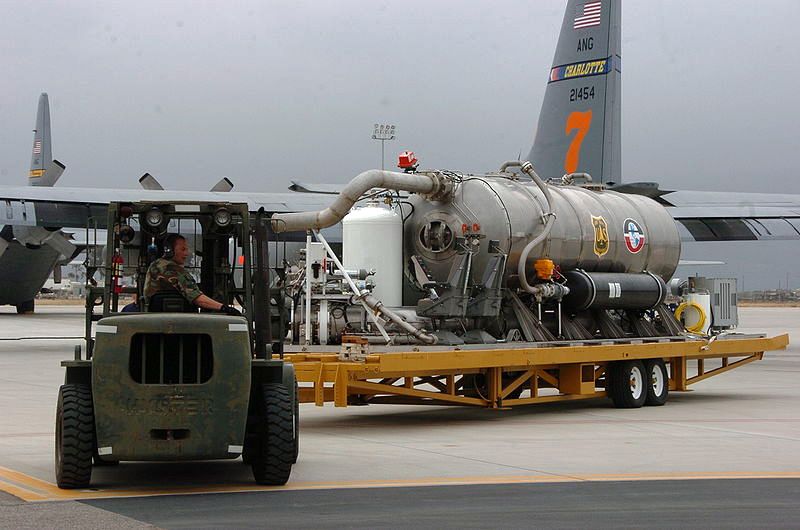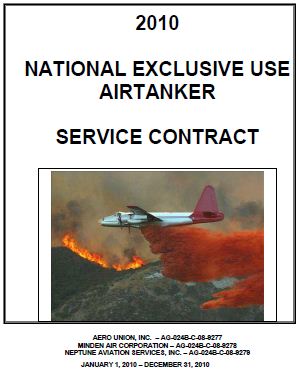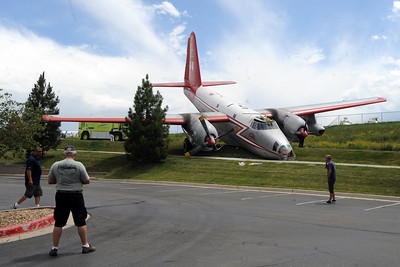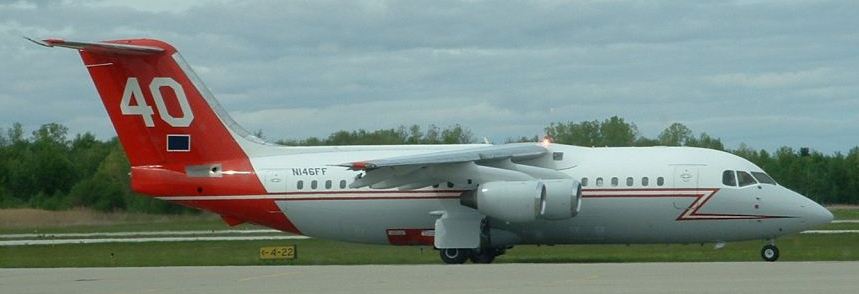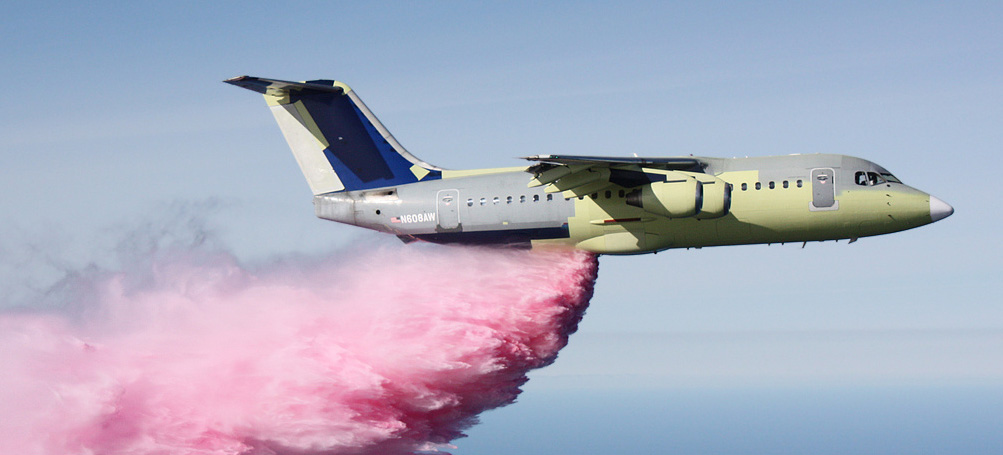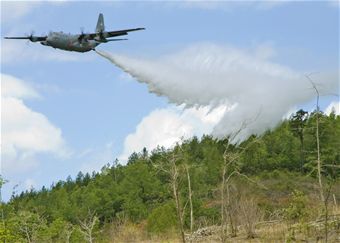
Yesterday two Mobile Airborne Fire Fighting Systems (MAFFS) air tankers from the California Air National Guard were used on the Skinner fire at Lake Skinner in southern California during a lightning bust that started numerous fires across the southern part of the state. The 146th Airlift wing out of the Channel Islands base put the new MAFFS 2 units in C-130s and it was the first time that the new systems had been used on a fire.
As Wildfire Today reported on January 28, 2009, the MAFFS 2 holds 400 more gallons of retardant than the original MAFFS, for a total of 3,400 gallons. And the nozzles, instead of exiting out the rear loading dock, are now routed through a sealed portal (a modified paratrooper door) on the plane’s left side. This makes it possible for the plane to be pressurized; in addition, the crew and the rear door will no longer be soaked by the retardant since the rear door can remain closed.
The new MAFFS 2 systems were first delivered in early 2009 or late 2008, but as far we we know, no MAFFS aircraft were used on fires in 2009. If we have a fire season with average or above average activity, we may see the MAFFS used more this year, since there are only 18 large air tankers on exclusive use contracts, down from 44 in 2002.
Here is an excerpt from an article in today’s My Valley News:
RIVERSIDE – At least one California Air National Guard C-130 with upgraded retardant-dropping equipment will be available today for firefighting missions in Riverside County and other Southland locations if needed.
A three-member Air Guard crew flew the first upgraded C-130 wildfire mission Thursday evening, dropping 3,000 gallons of retardant on the Skinner fire east of Murrieta, California National Guard Maj. Kimberly Holman said.
It was the first use on a live fire of the new MAFFS II system — units that roll into and out of C-130 aircraft — which can be re-loaded at any tanker base in Southern California, including Hemet, San Bernardino and Fox Field near Lancaster, Holman told City News Service.
The new system replaces original MAFFS units that have been in use more than 30 years, Holman said.
At 6:45 p.m. Thursday, a three-member crew in a gray, four-engine turboprop C-130 flew from the Channel Islands station about one hour north of Los Angeles and made one drop on the Skinner fire, Holman said in a telephone interview.
The C-130 crew included a pilot, co-pilot and a loadmaster, who coordinated with a Forest Service pilot in a lead air attack plane to time their drop, Holman said.
The crew will be available for more drops by 9 a.m. today, Holman said, and they are expected to continue to support firefighters on the ground over the next several days.
“This is the first time we have dropped on an actual fire with the MAFFS II equipment and it performed flawlessly,” said Col. Paul Hargrove, 146th Airlift Wing Commander.
The MAFFS II system makes military firefighting less costly and more efficient, Hargrove said.
The Skinner fire, first reported at 3:42 p.m. Thursday, had burned more than 700 acres by early today, according to Cal Fire-Riverside County.
The fire burned at a rapid rate of speed and more lightning strikes are expected over the next several days, California Air National Guard officials said.
The U.S. Forest Service gave the first launch order at about 6:15 p.m., Holman said.
